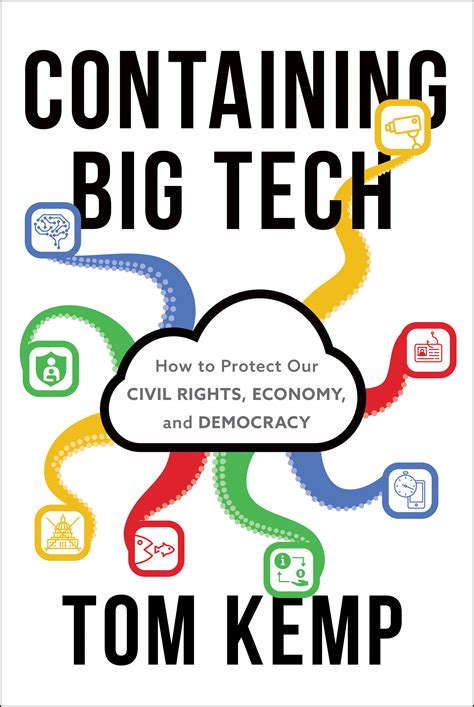
The Digital Dystopia: Big Tech’s Stranglehold on Power and Your Privacy
Tom Kemp’s “Containing Big Tech: How to Protect Our Civil Rights, Economy, and Democracy” is a compelling and insightful exploration of the pervasive influence of Big Tech companies on our daily lives and the broader implications for society. Kemp, a seasoned tech entrepreneur and policy advisor, delves into the intricate web of power, privacy, and innovation that these tech giants—Meta, Apple, Amazon, Microsoft, and Google—have woven.
Big Tech and Concentration of Power
Kemp meticulously documents how these companies have become near-monopolists, wielding unprecedented control over digital services. He highlights the monopolistic practices that stifle competition and innovation, creating an environment where a few powerful entities dictate market dynamics. This concentration of power limits entrepreneurial opportunities and poses significant threats to democracy and civil rights.
Data Deception and Privacy Invasion
Kemp dissects the tactics these tech giants employ to gather personal data surreptitiously. He explains how companies utilize seemingly innocuous apps and services to collect vast amounts of information without explicit user consent. Through misleading privacy policies and default settings that favor data collection, users often unknowingly grant access to their personal lives.
One alarming example Kemp discusses is the extensive use of tracking cookies and device fingerprinting. These tools enable companies to monitor user behavior across different websites and platforms, building detailed profiles that include browsing habits, interests, and purchasing history. This data is then sold to third parties or used for targeted advertising without the user’s consent.
Algorithms and Manipulation
Kemp delves into how Big Tech companies use this harvested data to influence decisions. These companies can accurately predict and manipulate user behavior by leveraging advanced AI algorithms. For instance, targeted advertising exploits personal data to deliver hyper-specific ads that can nudge users toward products or services, often without their conscious awareness.
One of the most alarming aspects Kemp highlights is the weaponization of sensitive data. He details how AI algorithms are used to analyze and act upon personal information in ways that can be profoundly invasive and harmful. For instance, AI-driven targeted advertising can manipulate consumer behavior, while predictive policing algorithms can reinforce existing biases and lead to discriminatory practices.
Kemp also illuminates the rise of deepfakes—AI-generated fake audio and video content that can be used to impersonate individuals, spread misinformation, and undermine public trust. He discusses how deepfakes have been employed to discredit public figures, influence elections, and even extort money by impersonating someone’s voice or likeness.
Moreover, Kemp highlights the darker side of algorithmic content curation. Social media platforms, driven by engagement metrics, use AI to curate content that maximizes user interaction. This often amplifies sensational or polarizing content, fostering echo chambers and subtly but profoundly influencing users’ opinions and choices.
Call to Action
Kemp’s book is a critical analysis and a call to action for greater transparency and regulation in the tech industry. He advocates robust data privacy laws and ethical guidelines to curb Big Tech’s excesses. By raising awareness and pushing for systemic change, Kemp aims to empower individuals to take control of their personal information and make informed decisions.
Conclusion
“Containing Big Tech” is a crucial read for anyone concerned about digital privacy and the manipulative power of AI. Kemp’s incisive critique and practical recommendations offer a roadmap for navigating the complex landscape of modern technology and reclaiming our autonomy in the digital age.